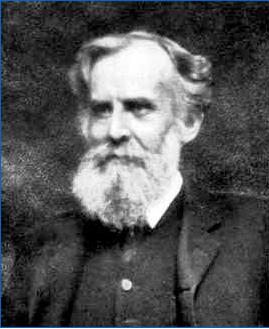Frequentist probability facts for kids

Frequentist probability is a way to understand how likely something is to happen. It says that the probability of an event is based on how often it happens over many tries. Imagine flipping a coin many times. The more you flip it, the closer the number of heads will get to half of all flips. This is called the long-run probability.
This idea helps us find probabilities in a fair, objective way. It means the results should not depend on anyone's personal opinion. This way of thinking about probability became popular because older ideas had some problems. The older "classical interpretation" defined probability based on things like the equal sides of a dice. But this didn't work for all situations.
Contents
What is Frequentist Probability?
In frequentist probability, we talk about chances only when we do clear, repeatable experiments. Think of rolling a dice or flipping a coin.
Understanding Experiments and Outcomes
The "sample space" is a list of all possible results from an experiment. For example, if you roll a standard dice, the sample space is {1, 2, 3, 4, 5, 6}. An "event" is a specific result or group of results you are interested in. Getting a "6" is an event. Getting an "even number" (2, 4, or 6) is also an event.
When you repeat an experiment many times, you can count how often a certain event happens. This is called its "relative frequency." For example, if you roll a dice 100 times and get a "6" 15 times, its relative frequency is 15/100, or 0.15.
Probability as a Limit
The main idea of frequentist probability is that as you do an experiment more and more times, the relative frequency of an event will settle down. It will get closer and closer to a specific value. This value is the probability of that event. So, if you roll a fair dice millions of times, the relative frequency of rolling a "6" will get very close to 1/6.
How Frequentism is Used
The frequentist interpretation is one way to define and use probabilities. It helps us apply mathematical probability theory to real-world situations. It gives clear advice on how to set up and design experiments.
Frequentism vs. Other Ideas
This approach is different from the Bayesian interpretation. Bayesian probability often includes personal beliefs or prior knowledge. Frequentism tries to be more objective. There has been some debate about which approach is better or when to use each one.
For example, when scientists do tests to see if a new medicine works, they often use frequentist methods. They repeat the experiment many times to see how often the medicine has a certain effect.
History of Frequentist Ideas
People have thought about probability for a long time. Even Aristotle hinted at the idea of frequentism. He wrote that "the probable is that which for the most part happens."
Early Thinkers
In the 1800s, thinkers like Siméon Denis Poisson started to clearly separate objective probabilities (like frequentism) from subjective ones (based on opinion). Soon after, many others, including John Stuart Mill and Antoine Augustin Cournot, also introduced frequentist ideas.
John Venn wrote a very detailed book about frequentist probability in 1866 called The Logic of Chance. By the end of the 1800s, frequentist ideas were very strong in science.
Modern Statistics
In the early 1900s, important statisticians like Ronald Aylmer Fisher, Jerzy Neyman, and Egon Pearson built many of the tools we use in statistics today. These tools, like significance testing and confidence intervals, are all based on frequentist probability. They all wanted to be objective in their work.
Where the Name Comes From
The word 'frequentist' was first used by Maurice Kendall in 1949. He used it to describe people who defined probability based on how often events happen. He wanted to show the difference between them and "non-frequentists" (now often called Bayesians).
Kendall noted that frequentists try to avoid personal opinions. They define probability based on the objective properties of things that happen in the real world.
Other Ways to Think About Probability
Probability theory is a part of mathematics. It focuses on how to work with probability values. But how we understand what those values mean can be different.
Classical Probability
Classical probability assigns chances based on perfect symmetry. For example, a fair coin has two equally likely sides, so the probability of heads is 1/2. This works well for simple games like dice or cards. However, it doesn't work if you don't know if outcomes are equally likely.
Bayesian Probability
Subjective (Bayesian) probability is a different idea. It thinks of probability as a "degree of belief." This means it can include what someone already knows or believes about a situation. While it's called "subjective," in science, these beliefs are often based on good reasons and data.
Propensity Probability
Another view, called propensity probability, sees probability as something that causes an event to happen, rather than just describing it.
See also
 In Spanish: Probabilidad frecuentista para niños
In Spanish: Probabilidad frecuentista para niños

